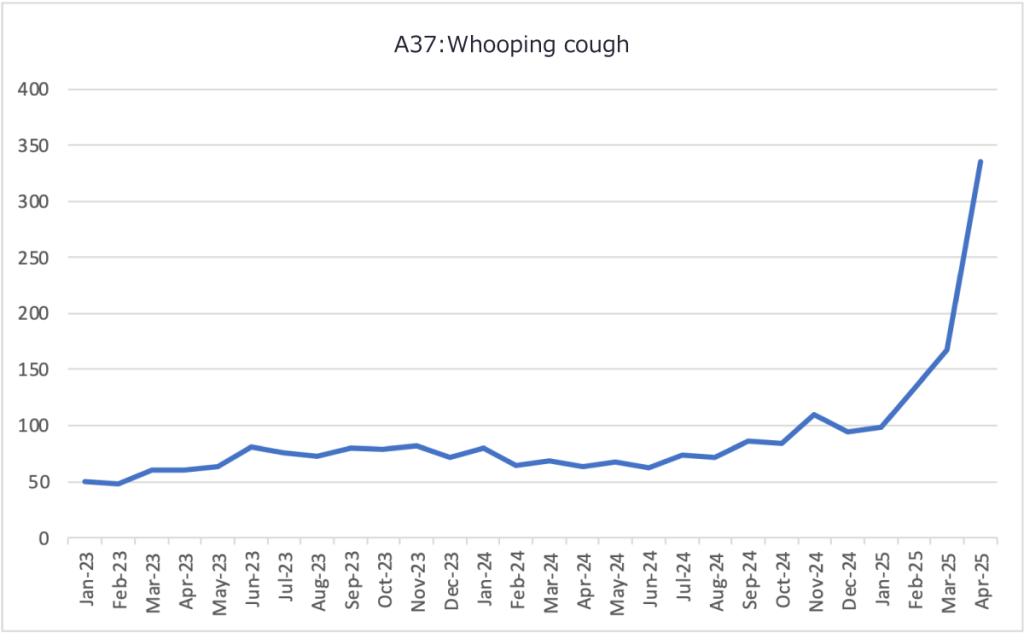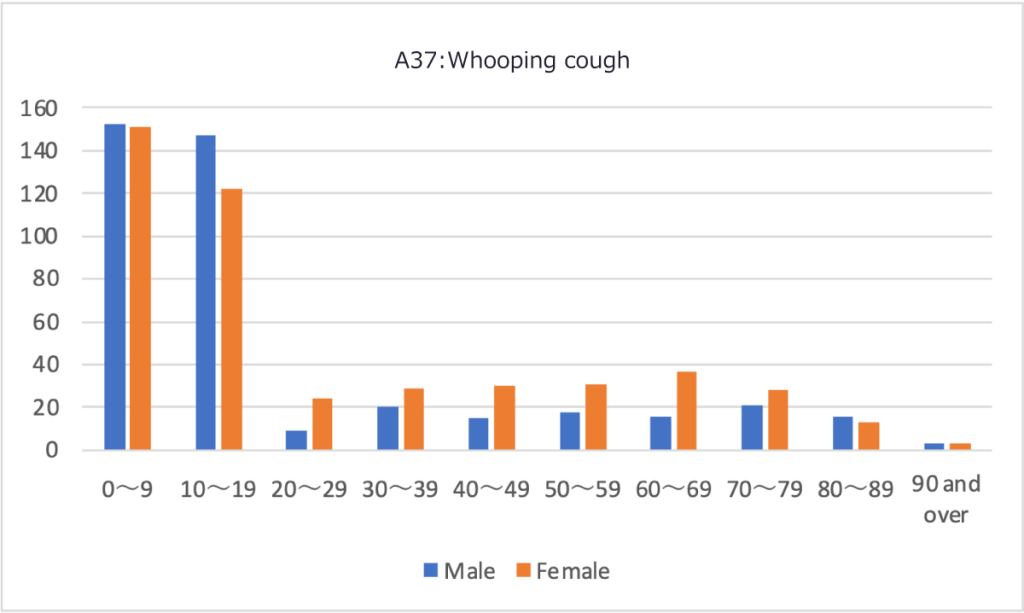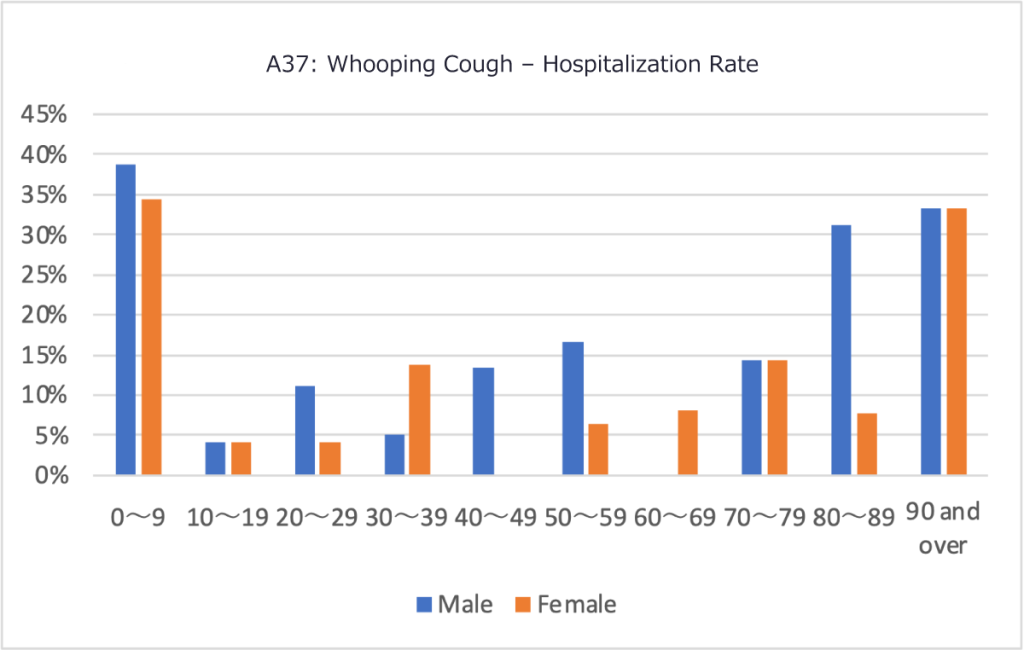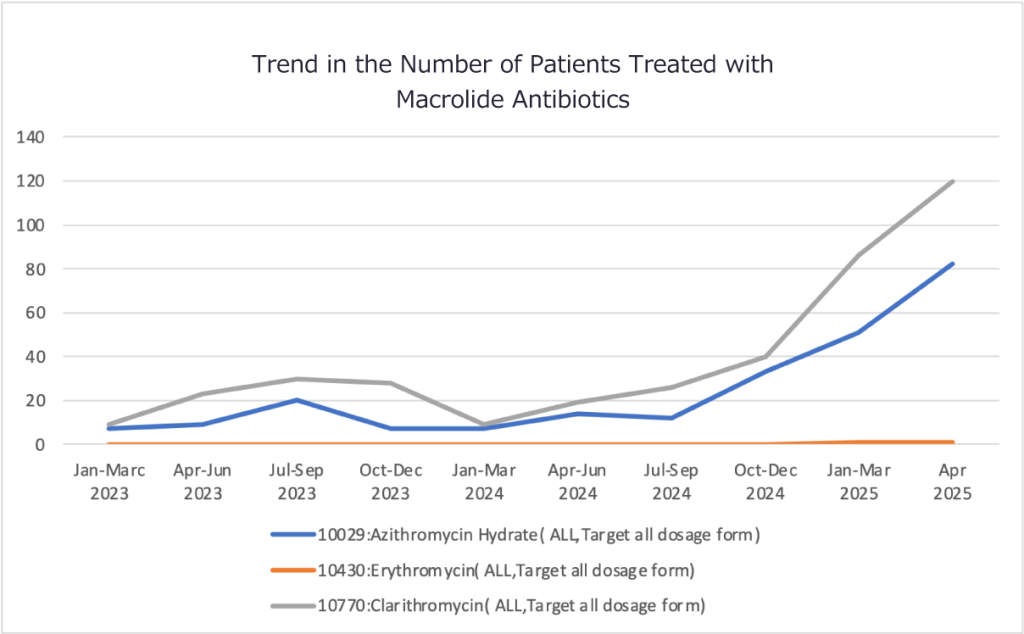
Analysis of the Whooping cough Outbreak and Trends in Therapeutic Drug Use
In 2025, whooping cough, also known as pertussis, is experiencing a widespread global outbreak. This acute respiratory infection, caused by Bordetella pertussis, is characterized by severe coughing fits that may include convulsions. While it can affect individuals of all ages, it is particularly common among children.
When maternal immunity is insufficient, infants may become infected at a very early age. Newborns and young infants are especially vulnerable to severe illness. In serious cases, complications such as pneumonia or brain damage can occur, and in rare instances, the disease may be fatal.
Typical treatment involves macrolide antibiotics such as erythromycin or clarithromycin, which are expected to reduce symptoms and prevent the spread of infection when administered early.
Using MDV data, we analyzed the trends in patient numbers, the breakdown of patients by age and gender, the proportion of hospitalized patients, and the trends in the number of patients treated with macrolide antibiotics.
First, we examined the trend in the number of Whooping cough patients.

The data shows a noticeable dip in shingles cases in 2020, likely due to limited healthcare access during the COVID-19 pandemic. Since then, however, the number of cases has been steadily climbing.
At the beginning of 2023, the number of whooping cough patients per month ranged between approximately 50 and 80. However, starting in the latter half of 2024, there was a sharp increase, reaching 335 cases by April 2025.
The surge was particularly notable from November 2024 onward, marking a turning point after which the number of patients continued to rise steadily. This trend indicates a growing spread of whooping cough infections.
Next, we examined the number of whooping cough patients by gender and age group.

Data period: January 2023 to April 2025
Only hospitals with complete data for all specified months were included
Number of facilities meeting the basic criteria: 264
Whooping cough was found to occur across all age groups, with particularly high numbers among children and adolescents aged 0–9 and 10–19. While the number of cases drops significantly from the 20s onward, a consistent number of adult patients is still observed, indicating that the disease affects a wide range of age groups.
Additionally, from the 20s and up, there are many age groups in which the number of female cases exceeds that of males. This trend is especially noticeable in the 50s and 60s age groups, where the number of female patients is significantly higher, as shown in the graph.

Data period: January 2023 to April 2025
Only hospitals with complete data for all specified months were included
Number of facilities meeting the inclusion criteria: 263
Hospitalizations due to whooping cough were particularly common among children aged 0–9 and adults aged 90 and over, with more than 30% of cases resulting in hospitalization for both males and females in these age groups. In contrast, hospitalization rates were generally low among those aged 10–79, with teenagers showing the lowest rate at just 4%.
These findings suggest that infants, young children, and the elderly are at higher risk of severe illness.
Additionally, some age groups showed gender differences. For example, among those in their 30s, women had slightly higher hospitalization rates, while in their 40s, the rate among women was extremely low at 0%. In the 80s age group, hospitalizations were more common among men, while in the 90s, no gender difference was observed according to the graph.
Finally, we examined the trend in the number of patients treated with macrolide antibiotics, which are commonly used as a standard treatment for whooping cough.

Data period: January 2023 to April 2025
Only hospitals with complete data for all specified months were included
Number of facilities meeting the inclusion criteria: 264
Target drugs: 10029 Azithromycin hydrate, 10430 Erythromycin, 10770 Clarithromycin
Among whooping cough patients, the main macrolide antibiotics used were clarithromycin and azithromycin. A sharp increase in their use was observed starting from October 2024. By April 2025, the number of patients treated with clarithromycin had risen to 120, while those treated with azithromycin reached 82.
The graph indicates that specific antibiotics were consistently prescribed, and their usage increased in line with the rise in patient numbers, suggesting that these drugs have become the primary treatment options.
Note: This article was published on August 1, 2025.
Data survey and analysis tailored to your specific requests
Databases, data analysis requests, and more.
© Medical Data Vision Co., Ltd. All Rights Reserved.





